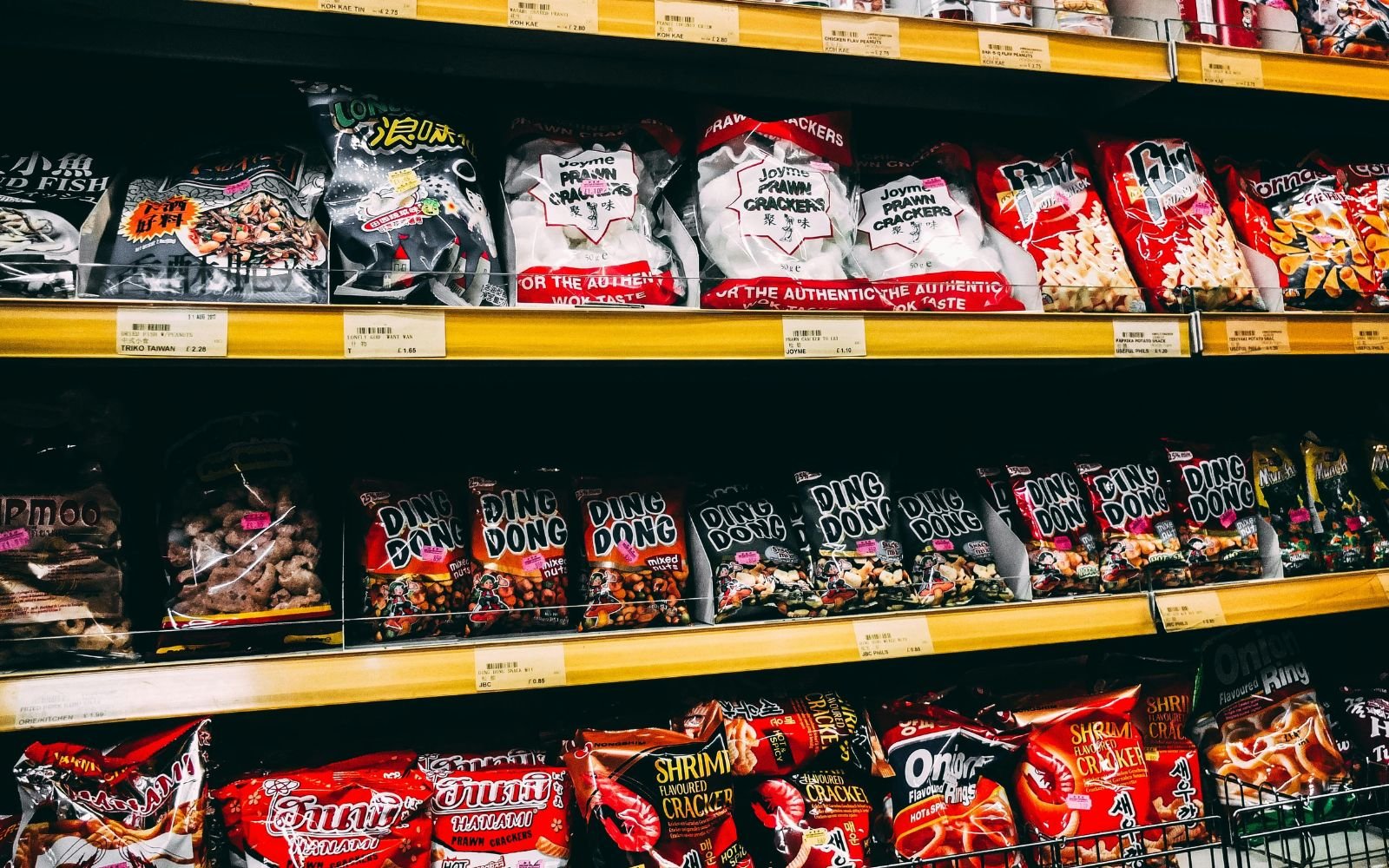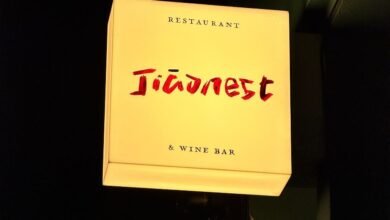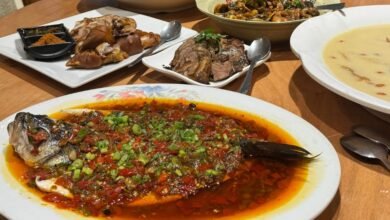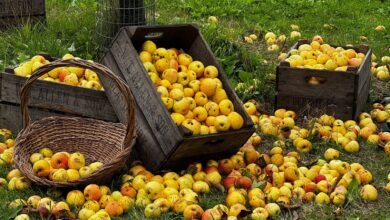
Words by Christina Dean
The appetite for Asian culture and particularly, Asian food, has skyrocketed in the UK over the past few years
Once concentrated in areas with large East and South East Asian communities, like Chinatown, Kingsland Road, and New Malden, nowadays Asian supermarkets are a much more common sight across the whole of the city. Head to any shopping centre and you’re likely to find at least one unit selling products from ESEA brands, ranging from pantry items to skincare to kawaii stationery.
Dominique Woolf, the half-Thai food writer and founder of condiment brand Woolf’s Kitchen pinpoints travel as a key reason why. “A Travel Trends report from SkyScanner shows that more than half of British travellers rate trying local cuisine and authentic food as their favourite thing to do while abroad. East and Southeast Asian food has become a standout favourite, with lots of people keen to recreate the dishes they’ve enjoyed on their travels once they’re back home,” she says. “These cuisines are also bang on trend, with items like crispy chilli oil, bubble tea, bao buns, and gochujang flying off the shelves as shoppers actively seek them out. On top of that, people are getting more adventurous in what they eat and cook at home.”
The rise in regional noodle dishes in London, like Chongqing xiaomian and ‘cold skin’ liangpi, was something we spotted last year but Insights Lab by Egg Soldiers also flagged the increase in lesser known Asian street food dishes, like bebek goreng (Indonesian smashed duck, which you can get at Bebek! Bebek! in Arcade Food Hall), and the popularity of mala and spicy numbing Sichuan flavours (like at Facing Heaven) in its UK Food & Drink Trends to Watch 2023/24 report. Speciality Food Magazine just named Asian flavours one of its 28 food and drink trends to watch in 2025, referencing everything from pho and banh mi to yuzu and char siu sauce and citing strong sales from condiment brands like White Mausu and NOJO.

Credit: Oseyo Facebook

Credit: Oseyo Facebook
With the return of Squid Game and hyped new openings like Miga, Korean culture is also back in the spotlight. At the end of 2023 The Grocer pinpointed tteokbokki, rice cakes simmered in a spicy sauce, as a food trend to watch, and Restaurant is predicting that Korean food will be another big trend in 2025 thanks to Judy Joo, who’s expanding her fried chicken brand Seoul Bird, and the Maguro Group, who operate the wildly popular corn dog brand Bunsik (which caused mad queues when it opened in London) and who is opening ‘the biggest Korean restaurant in the UK’ in Manchester.
And then there’s social media. Once a product goes viral, like Buldak carbonara ramen or Lao Gan Ma crispy chilli oil, it saturates people’s feeds and inspires hack recipes and copycat creations, turning specialist brands into household names. Even specialist shops are going viral – Amber-Rose Badrudin, owner of Croydon’s Oree Mart, told MyLondon that she was making six figures in sales within the first six months of opening and had customers travelling for hours to the store after they saw it on TikTok.
As Dominique Woolf says, “social media has made these flavours more accessible and inspired more home cooks to give them a go. With the rising cost of eating out, many are choosing to cook in instead, creating restaurant-style dishes on a budget. All of this is driving the demand for East and Southeast Asian flavours across the UK.”
This demand is not unique to the UK. The popularity of big chain Asian supermarkets like H-Mart and 99 Ranch Market in the States, which are both expanding according to the New York Times, has paved the way for a wave of independent corner stores and mini marts to open, like Suá Superette in LA, Yun Hai in Brooklyn, and Hao’s Grocery & Cafe in Fort Worth.


Food is a powerful method of connecting with home, which is why early generations of immigrants, both across the pond and here, started to open Asian supermarkets. Loon Fung, one of the UK’s first Chinese supermarkets, opened in Chinatown in 1965, followed by the likes of SeeWoo and New Loon Moon. The Japan Centre (which now also boasts Ichiba in Westfield and the Ramen Yokocho restaurants) first opened on Warwick Street in 1976 and has since had several central London locations. Another one of the old guard, Wing Yip, opened in Cricklewood in 1988 and Croydon in 1995.
Though all of those stores are still going strong, there’s been a noticeable growth in the number of Asian supermarkets in the capital over the last decade or so. Longdan (founded in 2006) and Tian Tian Market (founded in 2016) both number several locations across the city. Seoul Plaza, the retail arm of Korea Foods, the leading importer of Korean food in the UK, has branches across London as well as in the likes of Oxford, Reading, Liverpool, Birmingham and Bournemouth.
Oseyo, the largest Asian retailer in the UK, opened its 14th store in London Bridge at the back end of 2024, and has five more locations in the works. The growth has been rapid – the first store, at just 850 sq ft, opened in 2015 and now some of the sites are up in 20,000 sq ft territory. Step inside an Oseyo and you’ll find groceries, stationery, homeware and beauty, with the shelves stacked with kimchi, noodles, soju, tea, K-cosmetics and more. The array of K-brands on offer include Samyang (ramen), Nongshim (instant noodles and shrimp crackers), Lotte (soju, Milkis cream soda and Chocopie), CJ Bibigo (gyoza and kimchi), and K-Eats (rice cakes and corndogs).


The extensive product range is just part of the reason that the chain has become so popular, as Oseyo’s Ops/Marketing Lead Isaac Kweon explains, “Apart from the typical popular categories such as instant ramen and snacks, Oseyo has been a pioneer in the production of own brand label viral hits such as ‘Korean ice cup drinks’, ‘Citron tea’ & ‘Korean corn dogs’. What separates Oseyo from our competitors in the UK is the number of own brand label goods in our stores, which we have spent a decade developing with our partners in Asia, and now developing with local partners in the UK too.” Looks like the only way is up.
Want more long reads? Check out the rest of our In-Depth features here.







